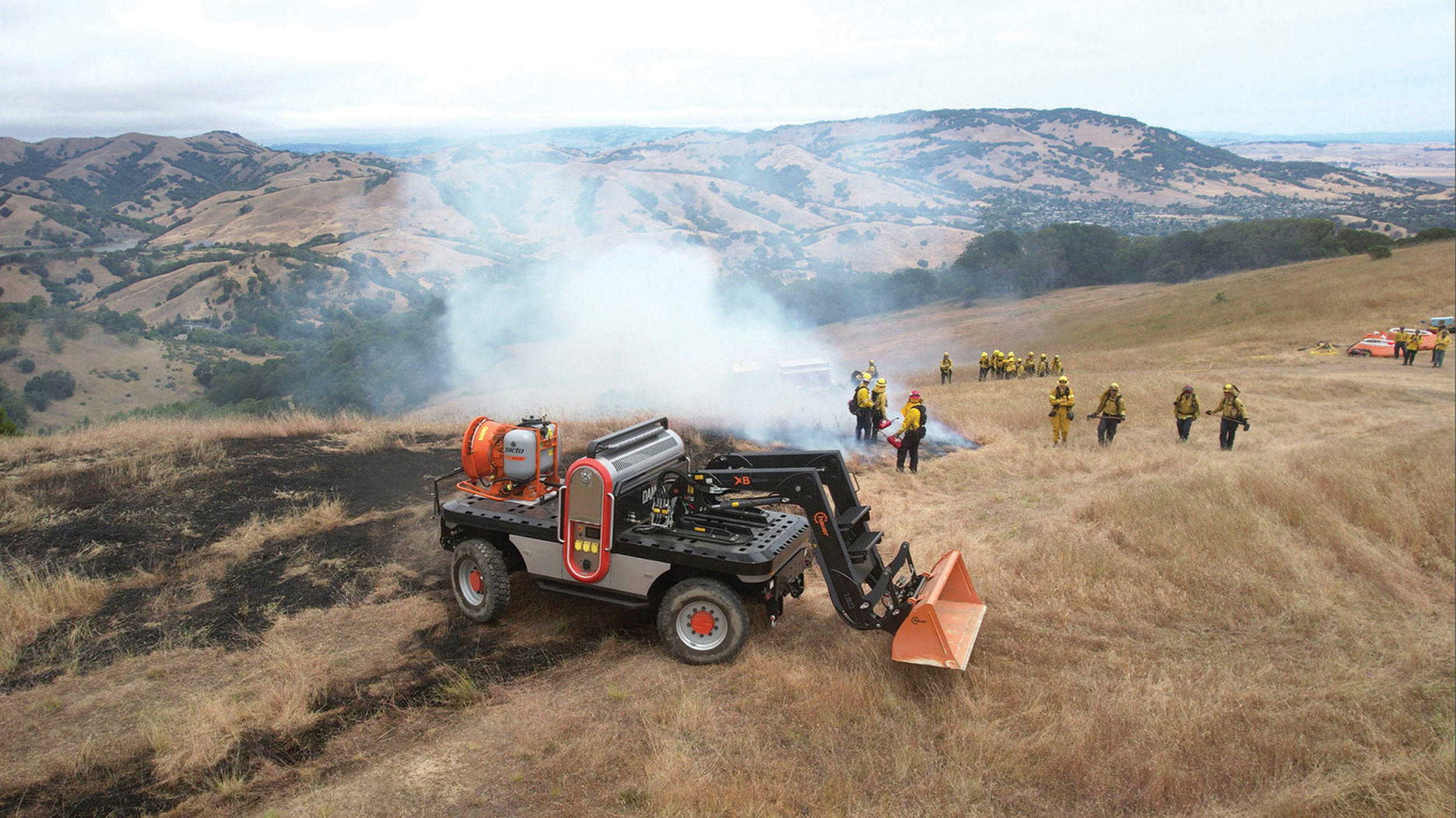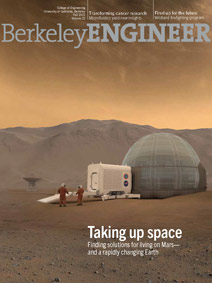 A DANNAR remote-controlled electric utility vehicle and energy platform is tested for use during wildfires. (Photo by Thomas Azwell/Berkeley Disaster Lab)
A DANNAR remote-controlled electric utility vehicle and energy platform is tested for use during wildfires. (Photo by Thomas Azwell/Berkeley Disaster Lab)Fired up for the future
To meet the need for more wildland firefighters, the Marin County Fire Department and Berkeley Engineering’s Disaster Lab have partnered to form FIRE Foundry (Fire, Innovation, Recruitment and Education), a program that recruits young adults from underrepresented communities for a career in fire service and trains them on cutting-edge firefighting technologies. Earlier this year, FIRE Foundry welcomed its first cohort: Of the 19 recruits, the majority identify as Latine and African American, and eight identify as women or nonbinary.
“FIRE Foundry is unique because it aims to remove both the barriers that prevent underrepresented groups from pursuing careers in fire service and the barriers that impede technology adoption in that field,” said Thomas Azwell, who leads Disaster Lab, a program that develops innovative engineering solutions for environmental challenges. “We hope that it may serve as a template for future recruiting and training programs.”
FIRE Foundry was started two years ago, when the Marin County Fire Department’s Jason Weber approached Azwell about increasing diversity in the fire service. Azwell was on board to create a partnership — including the Marin County Office of Equity, several Marin fire agencies, the College of Marin and the Conservation Corps — that would draw from the resources of Disaster Lab and educate this next generation of firefighters on new technologies.
“We created a program that provides the wraparound services — from financial support to mentoring — to support recruits through the education piece, their Emergency Medical Technician [EMT] certification and Firefighter 1 Academy,” said Azwell. “We want them to have what they need to not only be qualified but to be the most exceptional candidates applying for fire service careers.”
Support begins with the coursework, offered through the College of Marin, and continues through the fire academy and job interviews. After a year, participants earn certificates for Emergency Medical Responder and EMT. Once graduates are hired and work for a year or so, they’ll return as mentors for future recruits.
Azwell also works with colleagues to integrate the fire detection and response technologies being developed through Disaster Lab into the program. Because Disaster Lab brings together research resources from a host of organizations — including Berkeley labs, startups, fire agencies, the Department of Defense and multiple branches of the military — recruits are introduced to some of the latest firefighting tools and methods. Many technologies were developed by startups incubated through the CITRIS Foundry and the Sutardja Center for Entrepreneurship & Technology.
“Having that kind of applied opportunity isn’t only good for the scientists innovating, but it’s also good for the firefighters who are the potential adopters of this technology,” said Azwell. “Then they get to communicate their needs directly to the innovators.”
Technologies have already found their way into today’s firefighting toolbox. Recruits can utilize these technologies — including visual AI that detects fire and smoke using hillside cameras, sensors that detect power line failures, and autonomous bulldozers — as they are adopted. Azwell hopes these collaborations can help move innovation into the field.
“By bringing that experience and extra education into their careers, our recruits not only stand out when applying, but also can help the fire service make informed decisions around adoption and shape the future of firefighting,” he said.
Learn more: Fired up for the future

